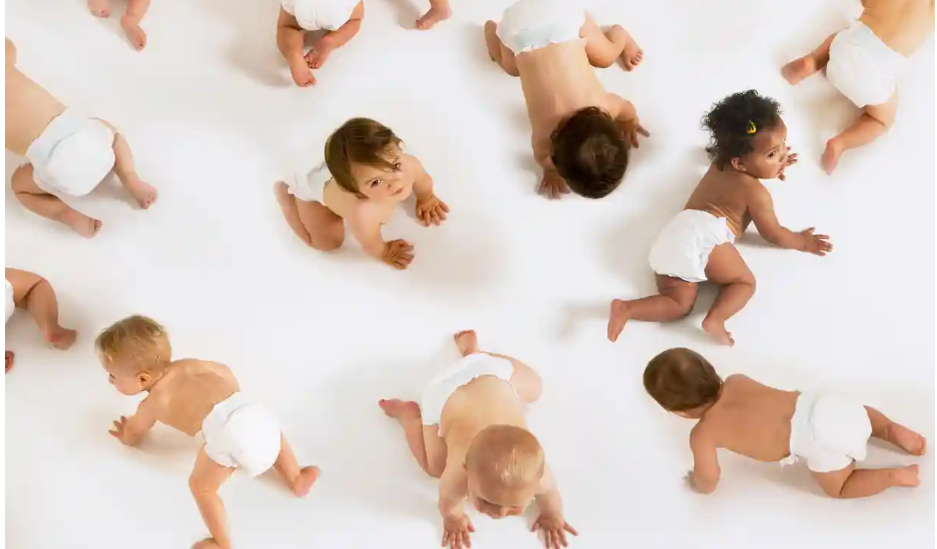James Hockaday
Reusables have 25% less global heating potential, finds UK government report, but overall picture is mixed
Disposable nappies are one of the biggest single contributors to plastic waste worldwide. Photograph: Alamy
Environmental campaigners are calling on the UK government to take action after new analysis found a significant difference between the carbon footprints of washable and disposable nappies.
Reusable nappies have 25% less global heating potential compared with single-use nappies, according to a report commissioned by the Department for Environment, Food and Rural Affairs (Defra).
The environmental impact of production was shown to be nearly nine times greater for single-use nappies, and nearly 10 times greater when it came to their disposal.
However, the report paints a mixed picture, with reusable nappies given a worse impact score for 11 of 18 categories – mainly associated with water and electricity usage when washing and drying.
Disposable nappies are one of the biggest single contributors to plastic waste worldwide, but a 2005 life cycle analysis declared there was “little or no difference between the environmental impact of reusable and disposable nappies”.
This resulted in a lack of action from policymakers, according to campaigners, who say the government has a responsibility to make it easier for parents to switch to reusables.
“We’ve seen the British government be really bold on lots of stuff to do with single-use plastic,” said Elisabeth Whitebread of the Nappy Alliance campaign group. “We’ve had the first plastic packaging tax in the world, we’ve recently seen them banning single-use plastic cutlery and plates, but by the number of items, as well as the weight and volume, nappies represent a much greater contribution to single-use plastic waste.
“This clearly needs policy initiative but also awareness raising – so many people don’t even think about nappies as a single-use plastic.”
Hilary Vick, a founder of the washable nappy service Nappy Ever After, added: “The playing field is unequal because parents and carers have the task and the expense of washing nappies and the time it takes, and yet the disposal of nappies is free. They’re readily available in supermarkets, which makes it seem normal – governments and local authorities have a responsibility to go against those norms.”
While Defra’s report could be a significant step forward for the reusable industry, single-use nappies were only found to leave a worse impact in seven of the categories, including global heating potential, land use, fossil resource scarcity and water use in manufacturing. But campaigners say these effects are particularly critical in light of the climate crisis.
Reusable nappies scored worse in areas including marine eutrophication, freshwater ecotoxicity, mineral resource scarcity, marine ecotoxicity and water consumption. The main factors behind their effects are water, detergent and electricity use when washing and drying nappies, and flushing faeces.
The report says parents can lessen their impact by using energy-efficient washing machines, air drying instead of tumble drying and passing nappies to a second child.
The Absorbent Hygiene Product Manufacturers Association (AHPMA) pointed to a 28% reduction in the global heating potential of disposables since 2005, as improved technology had led to smaller nappies and fewer materials being used in production – the reduction for reusables was 38.5%
The industry body suggested the difference in CO2 impact set out in the latest report was not as great as it might appear at first glance. It pointed to the report’s comparison of 2.5 years in disposable nappies to 6.4 return car journeys from London to Nottingham (1,622 miles), compared with 4.8 journeys (1,223 miles) for reusables – amounting to a difference of 400 miles.
“This should reassure parents and carers that both options represent responsible choices for babies, as they also consider performance, skin health benefits, and convenience when deciding on the best nappy option based on their individual family needs and lifestyles,” the AHPMA added.
A Defra spokesperson said: “We are committed to maximising resources and minimising waste, and are reviewing the findings of this analysis.”



